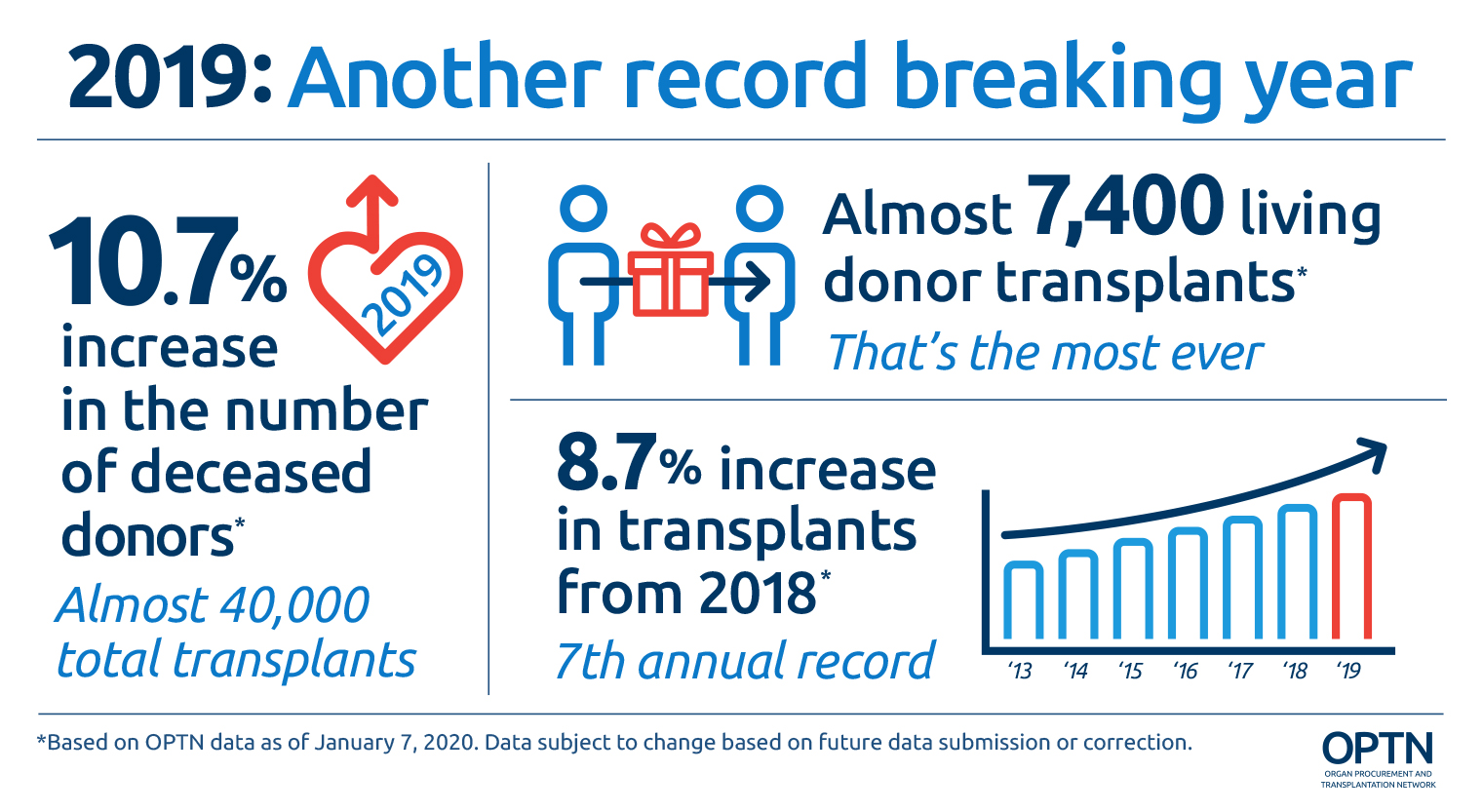Organ donation again sets record in 2019
Published on: Tuesday, January 7, 2020

Substantial and broad-based increase in transplantation
Nearly 11,900 people provided the lifesaving gift of organ donation upon their death last year, making 2019 the ninth consecutive record-breaking year for deceased donation in the United States. The 11,870 deceased donor total represents an increase of 10.7 percent over 2018, according to preliminary data from the Organ Procurement and Transplantation Network.
“Deceased donation has increased by 38 percent since 2014,” said OPTN Board of Directors President Maryl Johnson, M.D. “This staggering increase is a tribute to the dedication of donors and their families nationwide who make the courageous decision at a time of great personal loss to give the gift of life to people who are awaiting organ transplantation. While we recognize the sacrifices that have been made to make the increase possible, we are steadfast in continuing to serve the needs of nearly 113,000 people who are still awaiting a transplant.”
The increase in donation has been widespread across many areas of the country. Of the 58 organ procurement organizations, or OPOs, who coordinate deceased organ donation, 48 experienced an increase from 2018 to 2019. Forty-one OPOs established new all-time annual records for donation.
Organ transplants from living donors also established a new all-time record in 2019. The 7,397 total living donor transplants far exceeded the previous record of 6,992 set in 2004.
In total, health care teams across the country performed 39,718 transplants with organs from both deceased and living donors. This marks an 8.7 percent increase over 2018 and a seventh consecutive annual record.
Innovations in transplant science are allowing a greater proportion of deceased donors from less traditional demographic and medical categories. In 2019:
- 36 percent were age 50 or older.
- Nearly 20 percent died of cardiovascular failure, accounting for the greatest increase as a mechanism of death compared to 2018.
- 27 percent were identified under Public Health Service guidelines as having behavioral risk factors for recent bloodborne infection.
“A key to continuing to improve the transplant system is to develop new data tools, technology innovations and process enhancements so donation and transplant professionals can make efficient decisions,” said United Network for Organ Sharing CEO Brian Shepard. “We are partnering with experts inside and outside the transplant community to use new tools and ideas to save more lives.”



